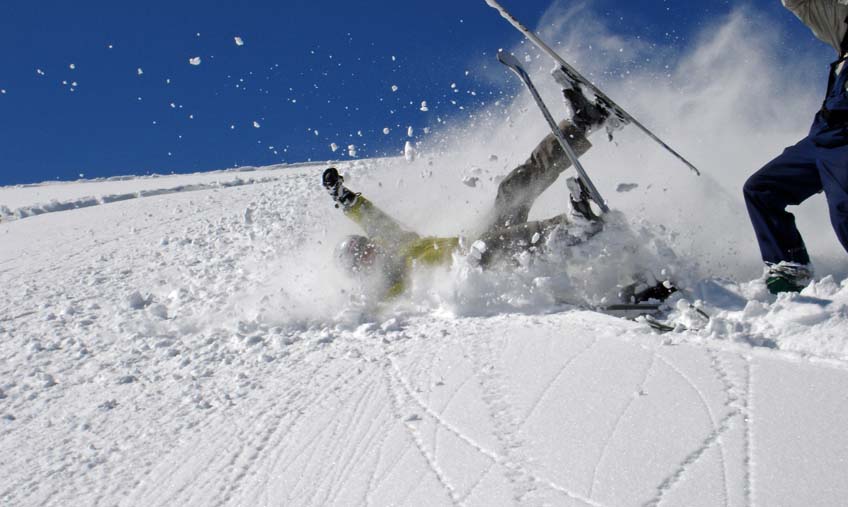Order over $100 and get Free shipping in Canada
Free shipping Across Canada On Orders Over $100

By Lynne Richardson, Physiotherapist and owner of Rocky Mountain Rehab & Sports Medicine Clinic in Canmore
As a Physiotherapist in a mountain community, I can tell it's ski season by the number of sore, swollen knees that limp through our clinic door. It's often a very classic story: "I had a slow twisting fall, my bindings did not release, I felt a pop, and my knee swelled immediately". Knee ligament injuries are very common in skiers, and an ACL tear is often the diagnosis.
What is an ACL?
The anterior cruciate ligament (ACL) is one of the the 4 major ligaments that connect the 2 main bones in the leg, the tibia and femur. The ACL provides stability to the knee joint, and it controls forces that causes hyperextension and rotation. Knee ligaments are most often injured with a sudden twisting motion, or an awkward landing from a jump. Ligament injuries can range in severity from a partial (grade 1) to a complete tear (grade 3).

What should you do if you sustain an acute knee injury?
If you have immediate swelling and pain with weight bearing, consult an Emergency or Sport Medicine Physician to have an X-ray, to rule out a bone fracture.
Then consult a qualified physiotherapist who is experienced in sports related knee injuries. With a few clinical hands-on tests, an experienced physio can accurately diagnose ligament injuries and make a plan for you.
Your physio will guide you through an injury specific rehabilitation program to improve mobility, strength, balance and function. Modalities such an ice, acupuncture, Electrical stimulation etc may be used to help to reduce your pain and swelling, and optimize your healing. When you are ready, you will go through a series of sport specific exercises to allow you to to return to sport safely. It is also important to note that your physical condition and strength are the most important factors to a prognosis if you end up having an ACL reconstruction.

Will you need surgery?
There are various degrees of ACL tears. Some ACL injuries can be fully rehabilitated with physiotherapy and the proper exercise program.
More complex injuries, that involve other ligaments and meniscus tears, may require surgical reconstruction by an orthopedic surgeon. With the proper post-op rehab program, this surgery can be very successful in allowing you to return to twisting, turning sports.
Should you use a knee brace?
Often a knee brace is helpful to protect your knee as you return to sports post injury and/or post operatively. Knee braces stimulate proprioception, which can help with muscle activation and performance.

Can you prevent an ACL tear?
Unfortunately, finely tuned athletes can tear their ACL. However, there are few practical things that you can do to minimize the likelihood of having a season ending injury.

Be physically fit. Do sport specific strength, plyometrics and balance exercises prior to the start of the season. Warm up before your first run. Ensure your equipment is in good working order. Call it a day before your muscles are fatigued. Learn good body mechanics for landing off jumps. Ski within your capabilities.
Good luck, ski safe, and have a Spring!

Lynne Richardson, PT
{"one"=>"Select 2 or 3 items to compare", "other"=>"{{ count }} of 3 items selected"}